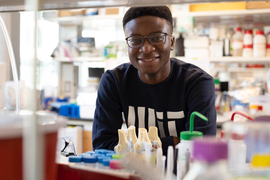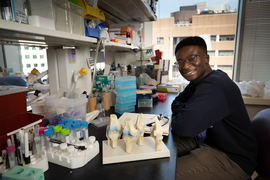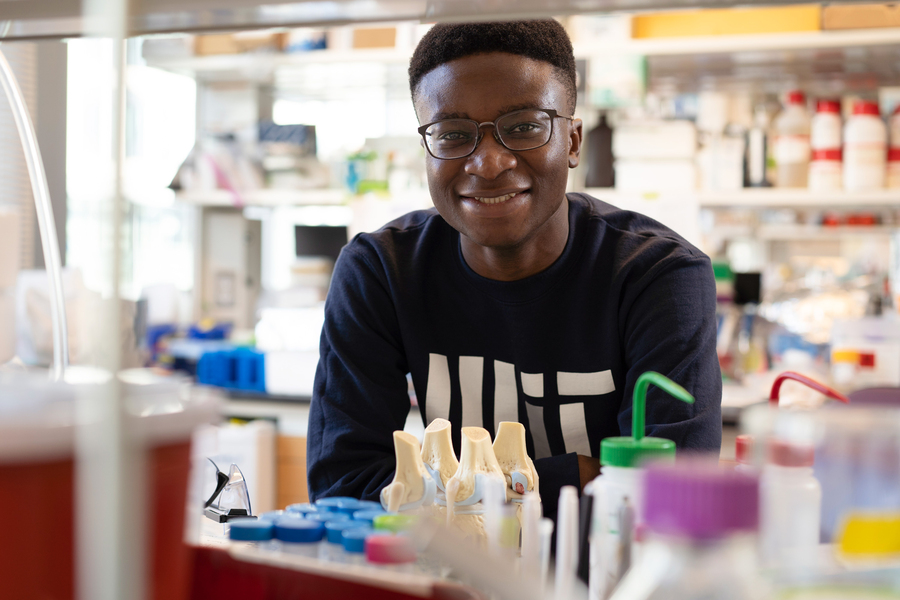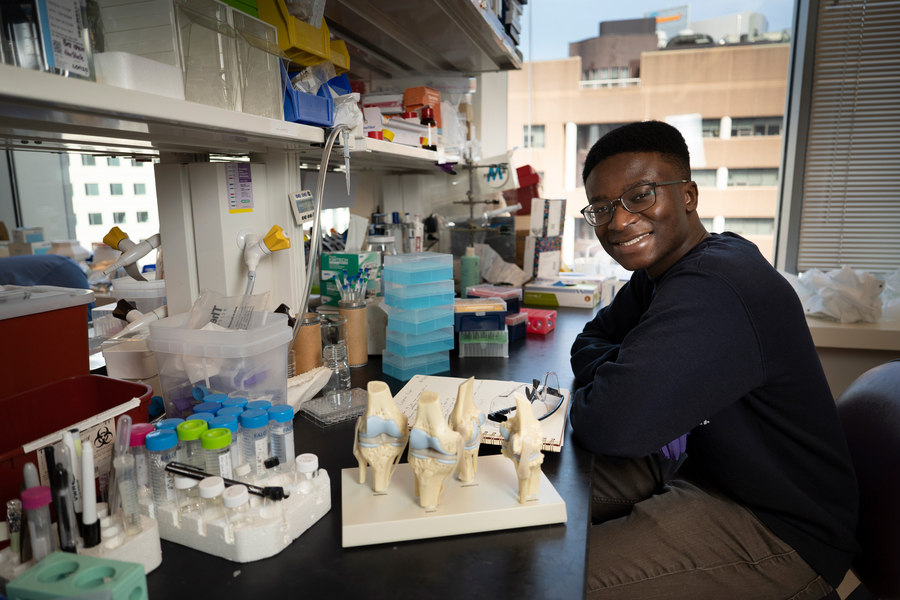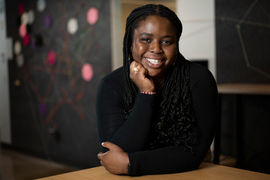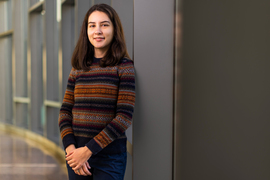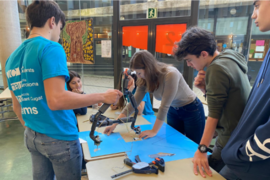Victor Damptey has been studying Spanish ever since he attended a language-immersion elementary school.
“It was a great opportunity to explore beyond the bounds of Minnesota to learn about different cultures and people around the world,” says Damptey. “This experience shaped a significant portion of my childhood.”
In his home state, Damptey found few opportunities to improve his fluency outside of the classroom, but he continued to study the language throughout middle school, high school, and now college.
Currently a senior, Damptey is pursuing a minor in Spanish alongside a major in biological engineering. Following graduation, he plans to attend medical school to become a physician-scientist while using his language skills to address disparities in health care.
While in high school, Damptey volunteered with a local pediatric hospital, finding that connecting with patients his age was a rewarding experience. He was inspired by not only the medical teams working with each patient, but also the years of research and development put into creating effective treatments and medications.
“Having the opportunity to volunteer in that medical space made me interested in the power of medicine in improving people’s lives,” says Damptey. “That sparked a strong desire within me to contribute to that field and make my own impact on other people.”
He was also a Boy Scout while growing up, and collaborated with a nursing home to create a music therapy program for residents with dementia for his Eagle Scout Service Project. He recalls interacting with the daughter of one of the elderly patients after a session.
“She told me with tears in her eyes that she learned details about her mother that she had never learned before and didn’t even have the chance to learn before dementia started to take apart her mother’s life,” says Damptey. “That was a significant experience that I had, learning that this disease is a very personal one and that it affects these families in different ways.”
That, along with his hospital volunteering experience, laid the groundwork for his interest in medicine as both a technical and social endeavor. At MIT, he’s worked with the PKG Center to continue to develop his passion for public service by participating in their spring break program as a leader in the health care track.
Honing lab and language skills
Damptey is currently a member of the lab of Institute Professor Paula Hammond, working under PhD candidate Brandon Johnston on new treatments for osteoarthritis. After three virtual semesters during the Covid-19 pandemic, Damptey was eager to delve into wet lab research on campus, but he came into it “basically knowing nothing,” he says. Damptey credits Johnston’s excellent mentorship with helping him contribute to an impactful project and develop valuable skills as a researcher.
In tandem, Damptey finds ways to apply his Spanish skills outside of the classroom. He recognizes it’s one thing to be conversationally fluent in a second language, and another thing entirely to be fluent in a technical setting.
“One way that I like to think about it when explaining it to people is, even if you’re fluent in another language, could you explain your UROP research in that language?” says Damptey. “For me personally, I don’t think I can yet, or at least not to the level of complexity that I should be able to if I were speaking to another scientist.”
ActLingual is a student organization Damptey joined as a first-year student, whose mission is to use non-English language and cultural competency skills in community service settings. Damptey co-leads the group’s Medical Interpreting Committee, where he developed a medical interpreting course in collaboration with the MIT Prehealth Advising Office to introduce students to the field. He was initially drawn to ActLingual for the opportunity to apply his language skills, but he found a new passion in tackling the problems that language barriers pose in health care.
“One thing that we as native speakers of English take for granted is that we can easily navigate this world without wondering if what we’re saying is not being communicated well, and we’re easily able to convey our thoughts, feelings, and questions,” Damptey says. “In a health care setting where a patient’s health is on the line, it becomes clear how important it is to properly communicate.”
With financial support from MIT Medical, a MindHandHeart grant, a COOP grant, and the Community Service Fund, the course has run during the January Independent Activities Period for the last two years and will hopefully continue in the future.
“Being able to explore this topic of language barriers and how important it is in access to quality health care made me excited about incorporating that into my own career as a future physician,” Damptey says. “I plan to work in an environment where I can leverage my Spanish fluency to help bridge that communication gap. Because at the end of the day, everyone deserves quality health care.”
Finding community
One aspect of MIT that drew Damptey, beyond the academic opportunities, was its people. Throughout his college career, he has leaned on community both in and outside of the classroom. In his Spanish classes, he’s connected with peers and professors over a shared loved for the language.
“It makes for a closer-knit community of students,” says Damptey, noting that some classes he’s taken for his minor have had as few as eight students. “By the end of the semester, you feel like you’ve gone through this great learning experience together, and I feel like it’s not the same when you’re in a lecture hall with so many people.”
Damptey is a member of Christians on Campus, the African Students’ Association, MIXED @ MIT, and the Black Students’ Union, all groups where he’s found a space to explore and connect with different aspects of his identity.
“Given all the different cultural experiences I’ve had — with my Ghanaian parents, or growing up in a Spanish-immersion school, or navigating my experiences as a Black man living in America — it’s been a really great opportunity for discussion about what it means to be different, whatever that means to you personally,” Damptey says. “MIT brings together a community of diverse scholars, and that is very important to me since that was something that was less noticeable in my educational background in my hometown. I wanted to come to an institution where I could look around and see people who look like me, and also learn from a variety of people.”
